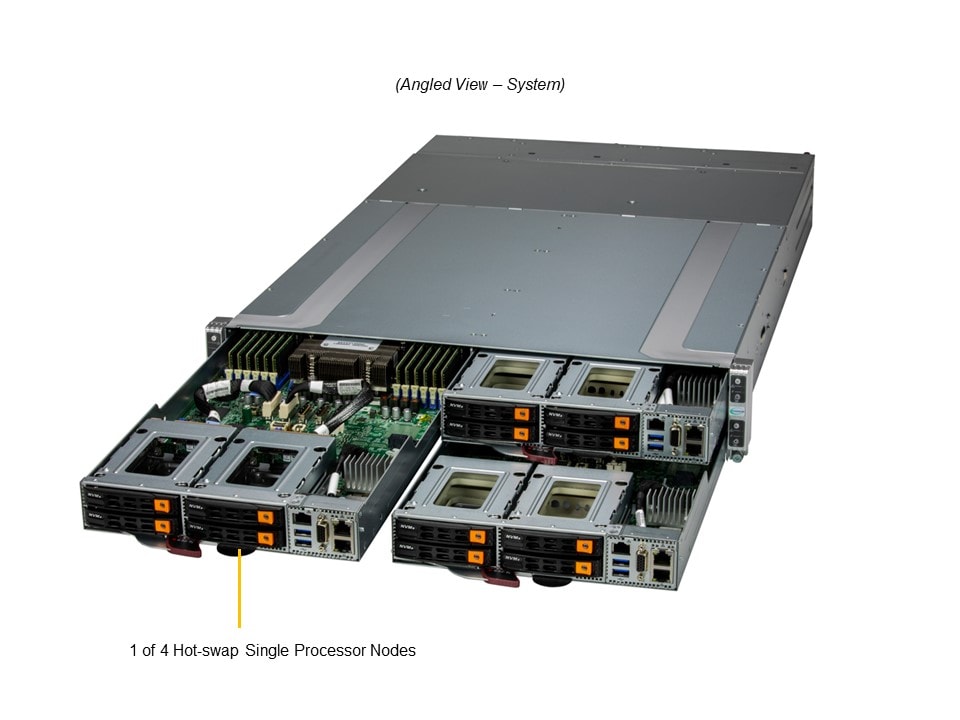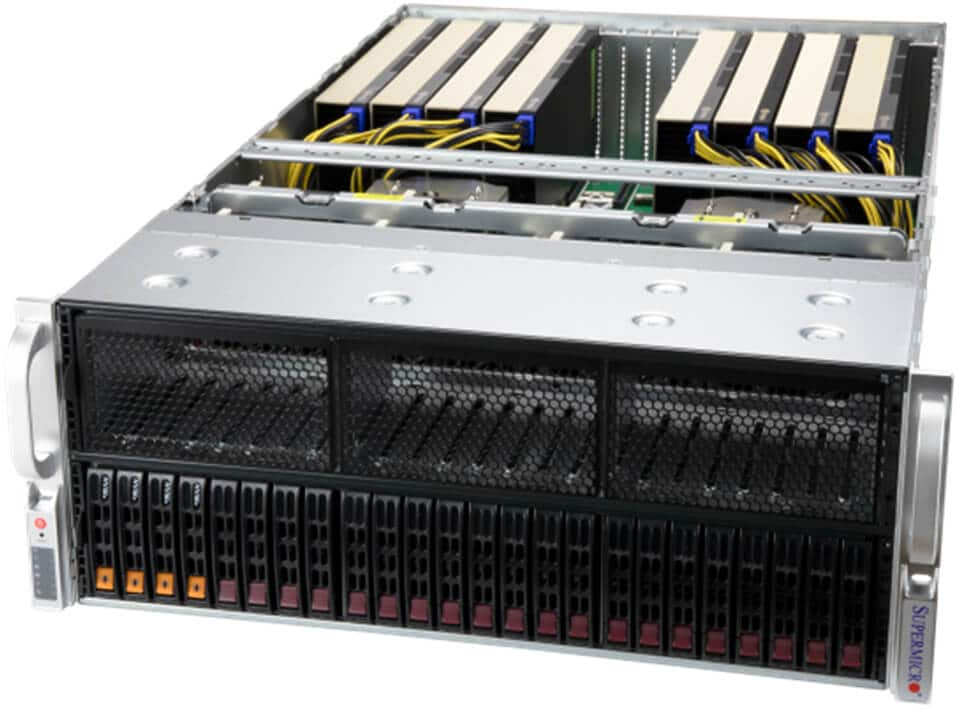Supermicro H13 motherboards dedicated to AMD 4th Generation using off-the-shelf kits
| Supermicro newsIn today's article we will discuss ourselves motherboards of the H13 generation, which supports AMD 4th Generation Genoa processors that fit into the SP5 socket and have a maximum TDP of 360W. An example of such a processor can be AMD EPYC 9654 . While the most important novelties of the H13 relative to the previous generation are support for PCI-E 5.0 slots, support for DDR5 RAM .
Supermicro AMD product family includes a number of servers designed for customers' workloads. All systems use
take advantage of the new features and capabilities of 4th generation AMD processors along with the use of H13 boards. Supermicro's product line can be divided into the following areas.
GrandTwin - is an innovative Supermicro system that places several independent servers in the same chassis. This reduces operating costs by allowing shared resources such as a 2U chassis, high-powered fans, motherboard bridge and N+1 power supplies. An example of this can be seen in the set-up below, where the MBD-H13SST-G. board is mounted on the kit..
AS-2115GT-HNTF

- Enclosure type 2u
- Chipset AMD SP5
- 12xDIMM slots DDR5 RDIMM
- 1xPCI-E 5.0 per one nod
- Possibility to monotize two m2 discs on one leg
- 1x IPMI na nod
- Two redundant 2200W power supplies
GPU family - This family is uniquely suited for HPC and AI applications. The systems are designed to accommodate multiple graphics cards in a single server, allowing applications to process data at tremendous speeds. While many of Supermicro's server lines can accommodate one or two graphics cards, the GPU family expands the number of graphics cards in a single server to 10 in a 4U format. In addition, servers in the GPU family can accommodate multiple graphics cards and are designed so that graphics cards can effectively communicate with each other, allowing internal communication paths to be bypassed for faster performance. GPU systems can also support the maximum amount of memory that 4th generation AMD EPYC can accommodate, up to 3TB at launch and 6TB (Q1 CY2023) per socket. These are divided into two types:
- GPU z HGX - With Supermicro's advanced architecture and thermal design, including liquid cooling and special heat sinks, our 8U GPU system with the latest NVIDIA HGX H100 8-GPU backplane can achieve up to 6 times better AI training performance and 7 times better inference load capability, and the highest density in a flexible 4U system. H13 GPU systems offer the latest technologies such as 400G networking, NVIDIA NVLink and NVSwitch, 1:1 GPUDirect RDMA, GPUDirect Storage and NVMe-oF on InfiniBand. An example of this can be seen in the following kit, where the following board is mounted on the kit H13DSG-O-CPU
AS -8125GS-TNHR

- 8U chassis type
- Dual Chipset AMD SP5
- 24xDIMM slots gniazd DDR5 RDIMM
- 8xPCI-E 5.0
- 12x bays 2.5" Hot-swap NVMe
- 1x IPMI
- Eight 3000W redundant power supplies
- PCI-E GPU systems - GPU systems that connect GPU gas pedals via the PCI-E bus are ideal for environments that require multiple graphics cards that perform their work via direct commands from the CPU. HPC and AI/ML environments will benefit significantly from AMD's 4th-generation EPYC processors. Various platforms can accommodate from one to 10 graphics cards. An example of this can be seen in the following kit, where the board is mounted on the kit H13DSG-O-CPU
AS -4125GS-TNRT
(See in store)

- 4U enclosure type
- Dual Chipset AMD SP5
- 24x DIMM slots gniazd DDR5 RDIMM
- 9x PCI-E 5.0
- 24x bays 2.5" Hot-swap NVMe/SATA/SAS (4x Dedykowane pod 2,5" NVMe)
- 1x IPMI
- Four 2000W redundant power supplies
Hyper family - Hyper servers are designed for maximum rack-mount flexibility with rear and front I/O for today's data center requirements. These systems can support maximum processor processing power and maximum DIMMs to accelerate a wide range of workloads. In addition, Hyper systems have multiple PCI-E slots (up to eight) for extreme flexibility, are tool-less for quick and easy operation, and feature a variety of storage devices (NVMe/SAS/SATA). Hyper systems can also support up to 2 AIOM/OCP 3.0 network cards, as exemplified by the following kit, where the board is mounted on an incl H13DSH
AS -1125HS-TNR

- Enclosure type 1U
- Single Chipset AMD SP5
- 4x DIMM slots gniazd DDR5 RDIMM
- 4x PCI-E 5.0
- 4x zatok 2.5" Hot-swap NVMe/SATA/SAS
- 1x IPMI
- Four 1200W redundant power supplies
Cloud DC - The CloudDC family was explicitly designed for cloud data centers where space is of the essence. The CloudDC product line is tool-less, which means that operating these servers (Hot Swap) is quick and easy. Input/output options are varied, and the systems can accommodate up to two dual graphics cards. The CloudDC family comes with dual AIOM OCP 3.0 support, giving the product family tremendous expandability and flexibility. The CloudDC family also supports up to 6 PCI-E 5.0 slots, with PCI-E slots evenly distributed between processors, contributing to additional flexibility. Twelve NVMe storage devices are supported for maximum performance and I/O capacity. An example of this can be seen in the following kit, where the following board is mounted on the kit H13SSW
AS -1015CS-TNR
- Enclosure type 1U
- Dual Chipset AMD SP5
- 24x DIMM slots gniazd DDR5 RDIMM
- 3x PCI-E 5.0
- 8x zatok 2.5" Hot-swap NVMe/SATA/SAS
- 1x What is IPMI?
- Four 860W redundant power supplies
Related pages:




